Mike Vardy's Blog, page 101
April 1, 2014
What Highlighter Colours Actually Mean
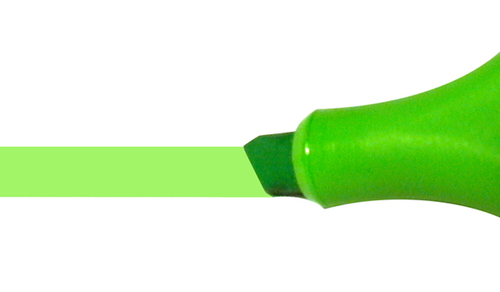
Highlighters are often misused. Worse, there messages are often misinterpreted.
Whether you're trying to "do" productive or simply love to highlight things for kicks, you need to know the message you're sending to your own mind and to others' minds when you use these popular pen-like markers. There's nothing worse than saying something in one manner and it being misinterpreted by others, much like if you were writing personal productivity satire and the jokes fell flat because there's no market for that -- not even on a globally scalable medium such as the internet.
Sorry, that example is a little far-fetched. But you get the drift. Here is a somewhat comprehensive list of what each highlighting colour signifies so that you don't make the same mistake once.
Yellow
The most common of the highlighters used -- unless you're a girl, of course -- highlighting something in yellow is often misinterpreted as your understanding that the highlighted item is more important than what is not highlighted, but not as important as something highlighted in a less commonly used colour.
Actual meaning: The highlighter-wielder is very afraid to do whatever is highlighted and that they should find someone else to do it.
Pink
The most feminine of the highlighter colours, this colour often is used to illustrate that the task or item is a desirable one and is likely to be handled with more care (or a woman's touch) than any other item(s) highlighted.
Actual meaning: If this person is male, they are suggesting you find a woman to handle the item. If it is a woman, they are suggesting that you get their mother or BFF to handle the item.
Blue
Often used when one is doing "blue sky thinking," this colour is used to highlight items that can be manifested into larger, bigger items that allow creativity and innovation to flow as freely as the ink flows from the faux-marker that they are using.
Actual meaning: The person is sad, knowing that they will have to do whatever they have highlighted.
Green
Not representing environmental items, as one would think because since they are using it on paper they are actually killing trees just using the writing implement. Yet this is what most thought it meant (highlighting environmental issues) in the early part of this century. Before that, it was always finance-related. Thankfully, that stereotypical thinking returned around the year 2007.
Actual meaning: The person is afraid of the item that they have highlighted and is sad knowing that they still have to do it, despite said fear.
Orange
Some interpret that whatever is highlighted in this colour is defined as an early morning item (sunrise) or an early evening item (sunset). Some think that items highlighted in orange are being put off until the end of October. Others just assume it was the only highlighter at hand.
Actual meaning: These items will be done either at sunrise or sunset on a day near the end of October.
Purple
Known as the "royal colour," this colour was used to highlight things that were of extreme importance. Incidentally, before the Baltimore Ravens adopted this colour as the primary uniform colour, purple was also known as "the other girl colour" even though the Los Angeles Lakers had been donning it for years prior. This colour is not to be confused with red wine that may make its way onto documents. They are not the same -- in fact, it highlights a far worse issue at hand.
Actual meaning: Those who want to "do" productive don't use purple highlighters; it is red wine that is often mistaken as such. The perceived meaning is actually spot on.
Conclusion
If you learn anything from this article, it should be this: Don't use purple highlighters. (Now where'd I put my wine?)
Photo credit: adamci via SXC.HU







Why I Switched To Todoist
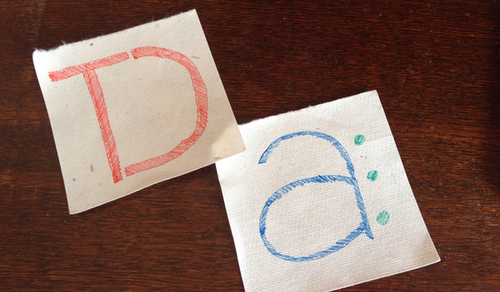
In recent weeks I've made a shift in my Productivity Path. While I still love what The Omni Group is doing with OmniFocus, I am using another application for my task management these days.
Actually, I'm using two.
For the past six weeks, I've been using Asana for my larger team-oriented tasks and projects and Todoist for my individual and smaller team task management.
Why the switch, specifically from OmniFocus to Todoist? There are several reasons behind the move:
1. Ubiquity
Ultimately, most people want a task management solution that they can use anytime, anywhere. Unfortunately OmniFocus doesn't provide that unless you are using iOS or Mac devices. But the fact of the matter is more people are using Android these days, and the only real solution that Android users have to get their stuff to OmniFocus are third party apps like OmniSend, Send-2-OmniFocus, and OmniFocus Mailer. They can't actually work with OmniFocus on the go, unless they're also carrying an iPad or even a Mac notebook with them. That limits the accessibility of the app, and that is less than ideal.
Todoist, on the other hand, has a slew of platforms it is developed for:
Android
Chrome
Windows
iOS
Mac
Todoist even integrates with Gmail, Outlook, and Postbox. No matter what device you're using, you can access Todoist (as long as you are able to connect with the Internet upon launch). With integration for three major email clients, you have the ability to have your task manager at the ready while processing your email inbox. Very nice. And with Todoist Anywhere, you can view your Todoist setup on any site.
Now that's ubiquity.
2. Pricing
Longtime readers know that I don't have a problem paying for products and services. I've dropped lots of cash on different applications that I've abandoned long ago. But I know that I am in the minority when it comes to paying for applications that many consider to be simply a "to do list" and nothing more. There are hundreds of free applications like this out there, but you get what you pay for in many cases.
I'd suggest that Todoist strikes a nice balance in this space, offering a limited free version that will work for many people, and a more robust premium version that scales up exceptionally well.
The free version of Todoist will suffice for people who are looking to add a task management component to their digital workflow for the first time, or for those who don't need a lot of bells and whistles and yet still want a pleasing user experience. Todoist Premium is only $29 per year and you get a lot for your money. If you've been using a task management solution for a while and need to be able to customize things to better suit your approach to productivity, then you'll definitely want to "go premium" with Todoist.
Todoist Premium offers a ton of features (productivity tracking, enhanced label system, project templates, file attachments, etc.) for what amounts to less than $2.50 per day. That kind of pricing is a lot easier to swallow than what other applications cost – OmniFocus included.
3. Flexibility
There are a few areas where I find Todoist's flexibility to be another major selling point.
For one, Todoist also offers something that OmniFocus doesn't: team task management. For the purposes of my virtual assistant experiment, I know I can create a project in Todoist and share items in there with my VA. I can't do that with OmniFocus.
Now I know I can do this with Asana as well, but I actually prefer the ability to keep my own stuff separate from larger team stuff...and Asana is where I keep my larger team stuff. So I have a project that I use for things I work with my VA and as things come in I can actually drag them to that project from other projects that I'm not sharing. This process will help me offload some tasks I've got in my Inbox to my VA seamlessly. (Note: I'll be sharing how I use Todoist with my virtual assistant more extensively in a future blog post.)
Todoist's labelling is also helpful, in that I can decide whether I want to use "labels" as contexts or not. I can actually use them in a number of ways, and because I can apply multiple labels to a task I can really hone in on what I want to do at any given time.
I can also flag tasks with "priority levels," allowing me to mark off my Three Big Rocks for the next day if I want. Todoist allows users to mesh their own approaches to productivity with well-known methodologies like GTD, The Agile Way, and even Kanban to a certain degree (largely through the use of colour). It's incredibly flexible and versatile...which is what I need in a task management application.
Roadblocks Along The Way
There are a few things that I'm going to have to trudge through as I get used to using Todoist:
No direct path from Drafts. Here's hoping they get some URL schemes happening here. In the meantime, I simply email tasks to my Inbox and then process from there.
No direct path from Dispatch. See above.
No Weekly Review function...sort of. Todoist has Todoist Karma, which allows you to track your productivity, but I do miss the reviewing capabilities of OmniFocus (specifically on the iPad). I hope Todoist looks at adding this functionality in the future.
The more time I spend in Todoist, the more comfortable I'm getting. I'll be writing more about my experience with it as the weeks and months progress.
I'll still be keeping my eyes on what other options are out there, including OmniFocus, because that is part of my job. But Android is on the rise (again, OmniFocus is Mac and iOS only) and I want to help people get comfortable using task management solutions. The pricing of something like OmniFocus can be a deal-breaker for those who don't even think they need a tool like it in the first place. I'll still be writing about OmniFocus from time to time, but there are a lot of great folks out there who write abut it regularly and focus specifically on it. Sven Fechner of SimplicityBliss, Tim Stringer of Technically Simple and Learn OmniFocus, Shawn Blanc, David Sparks, Kourosh Dini (who wrote the great Creating Flow with OmniFocus), and Asian Efficiency (who offer OmniFocus Premium Posts to help you get the most out of the app in its various iterations).
I can say unequivocally that I'm a Todoist user now. I like what they've put together and I like where they're headed. Asana is great for larger teams and I'll continue to use it (and recommend it) for that purpose, but Todoist is now my personal task management application of choice.
Thoughts on Todoist? Have another task management application of choice? I'd love to hear your thoughts in the comments below.






 Related StoriesReview: Checkmark 2 For iOSStep Away From The AppFocus On The App Within
Related StoriesReview: Checkmark 2 For iOSStep Away From The AppFocus On The App Within
March 27, 2014
How To Make The Don't Break The Chain Ritual Work
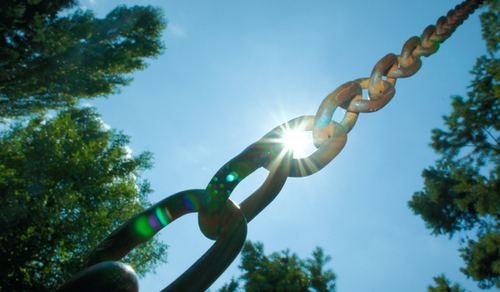
The "Don't Break The Chain" ritualization technique, popularized by Jerry Seinfeld, seems to be something that's written as a hard and fast system. Do a particular thing every day and make sure you always keep at it every day so that you don't break the chain. But it doesn't have to be so regimented. Much like how you can tweak The Pomodoro Technique to best suit your workflow, you can adjust the Don't Break The Chain approach to work according to your needs — and without compromising the integrity of the approach in the process.
One of the best ways to do this is to set yourself up so that certain habits only need to be done on certain days. For example, I don't exercise every day. I take Thursdays off, so my "chain" for exercise runs six days with a break on Thursdays. But I don't consider that a break in the chain because it is a consistent break that can be explained. The problem is when you start moving that break around. Once you start seeing the chain being broken in several different places, then you'll subconsciously consider it to be broken. Then you'll either give up on the ritual or beat yourself up about breaking the chain. So if you're going to be working on something regularly like exercise, writing a book, or something that requires measured regular progress, make sure that you map out the days you plan on making that progress and then stick to it. A great online tool to help you do this for free can be found at Don't Break The Chain.1
If you're trying to keep the chain going on several rituals at once when you first start monitoring them, you're going to have a tougher time keeping it together. I'd suggest you start with one large tasks or action that will lay the foundation for success and happiness. For me, those kind of things are very large projects. Writing a book would be one, but you should probably be more specific with that and shoot for writing a number of words for the book instead. The more specific you are, the more measurable it is. Even if you make it a small action towards a much larger project (i.e., "Write 500 words for new book"), they'll add up a lot faster than "Work on book," and will mean a hell of a lot more as well.
Keep in mind that chains can have different intervals, too. As I write this, I'm sitting in a coffee shop waiting for my friend Jim Henshaw to arrive for our weekly get-together. This is something we do every single week, with very few exceptions. These sessions are a great way for me to unwind and reset myself for the days ahead, so it's valuable to me. Every time we have to miss one, it throws me off a little bit. So it's a chain that I don't want to break unless there is a very good reason to break it, and both Jim and I make sure we let each other know far enough in advance so it doesn't throw us off as much.
The bottom line is that the best way to make sure that you can keep at the Don't Break The Chain approach is to make sure that each chain is valuable, because the last thing anyone wants to do is to break anything that's valuable.
Photo credit: raZna via SXC.HU
1 I’m working on a comprehensive guide to habit-tracking apps, all of which can be used in some form or another to help you not break the chain. I’ll post a link here once that’s good to go.






 Related StoriesCall For Help: A Month Of Virtual AssistanceThe 3 Things Seinfeld Does That I've Built Into My Own WorkflowThe One Email Trick That Keeps My Inbox In Shape
Related StoriesCall For Help: A Month Of Virtual AssistanceThe 3 Things Seinfeld Does That I've Built Into My Own WorkflowThe One Email Trick That Keeps My Inbox In Shape
March 25, 2014
Call For Help: A Month Of Virtual Assistance

"Humble people ask for help." - Joyce Meyer
It's time. In fact, it's probably long past time. I'm hiring a virtual assistant to help me out with a myriad of my tasks. But rather than keep the process under wraps, I'm taking a page from Austin Kleon's new book Show Your Work and am going to share it with you. After all, you may be thinking about pulling the trigger and if I can help you with that through this experiment then we both win.
Here's how this series is going to work...
Week One
In the first post in the series, I'm going to research some virtual assistant resources to decide which one is the best fit for me. I've been keeping my eye on the resources Chris Ducker has been offering surrounding the launch of his upcoming book Virtual Freedom and am using them in conjunction with what others have done (Michael Hyatt, Craig Jarrow, etc.) to help me come to this decision.
Week Two/Week Three
I'll chronicle the progress of the experiment in these two posts in the series. I'll list off what activities my virtual assistant took care of, what I was willing (and not willing) to hand off to them, and what the impact of each decision I made revolving around this experiment was. These are going to be fairly length reads, but they'll give you a lot of insight on what it's like to have a virtual assistant taking care of certain things for you.
Week Four
In the final post in the series, I'll offer up my final thoughts on how the whole month with virtual assistance went and whether or not I plan on continuing on as-is or make significant changes in one form or another. I'll provide an overview of what worked well, what didn't work so well, and provide a plan of action for anyone thinking about bringing on a virtual assistant themselves.
I'll be starting the series on Tuesday April 8th and will publish my findings every Tuesday for four weeks.1
In the meantime, I'd love to hear your thoughts on hiring a virtual assistant. Have you done it? Would you do it? What has your experience been if you have hired one? Sound off in the comments below.
Photo credit: translator via SXC.HU
1 Essentially I’ll be doing this a week ahead of the posting date so I can offer the most comprehensive findings throughout the series.






 Related StoriesThe 3 Things Seinfeld Does That I've Built Into My Own WorkflowThe One Email Trick That Keeps My Inbox In ShapeA Productive Life: Collect, Organize, Review And Eliminate
Related StoriesThe 3 Things Seinfeld Does That I've Built Into My Own WorkflowThe One Email Trick That Keeps My Inbox In ShapeA Productive Life: Collect, Organize, Review And Eliminate
March 23, 2014
What I've Learned From The Productivityist Reader Survey
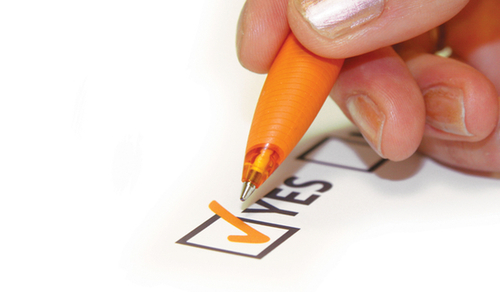
The results of my first reader survey have been tabulated, a little more than six weeks after asking people to take it. I'd like to thank everyone who took the time to answer the questions;1 the goal is to use those answers to help shape the future of this site and my work.
Now I'm going to share some of the data with you...
Based on the survey, the majority of my audience is male — over 75%.
The majority of my readers are between the ages of 35 and 44, but the age ranges of 25-34 and 45-54 also scored high.
62% of my audience are based in the USA. My fellow Canadians came in second — but a very distant second.
It turns out that not one single range of readership longevity outpaced another by all that much, but the highest tally was for those who have been reading Productivityist for 1-2 years.
Many of you have gone to post-secondary school. In fact, most of you have either received your Bachelor's or Master's Degree. 45% of my audience earns over $70,000 in household income per year and 50% of you work for someone full time.
Many of the other questions were fairly open-ended, allowing me to get feedback on what you're looking for me now and down the road here at Productivityist. With that in mind, here's some of what I've concluded based on some of the answers given:
You like the bi-weekly newsletter format. An overwhelming majority of you indicated that delivering The Productivityist Newsletter bi-weekly is best, so I'll keep doing that. You can subscribe to the newsletter here. (That doesn't mean that the odd ad-hoc email won't make its way to your inbox, but those instances will be few and far between.)
I need to do a better job on the podcasting side of things. A lot of you that listen to Mikes on Mics have liked the shift to the new format, but many feel there's still a void from when I used to do solo podcasting. So I'll be bringing back a solo podcast — named The Productivityist Podcast – starting early next month. I'll share more details on the new podcast later this week.
You want me to make more stuff. Beyond the new podcast, you want me to create more products that I can offer, more posts that offer a deeper dive into best practices (not just my own, either), and get better while doing so. I received a lot of "keep up the great work" comments as well, which I not only appreciate but will use as fuel to make more stuff (and not forsake quality for quantity in the process).
There were a lot of ideas left for me to consider, and I am weighing each and every one of them. I spent the better part of the last two weeks mapping out my Idea Calendar so that I can bring some of these ideas to life over the next several months, and I can't wait to unleash them as they become ready for primetime.
Thanks again to all of you that participated in the survey. I really appreciate you taking the time to help me make things better here for my readership — and that includes you!
(And thanks to Michael Hyatt for putting the idea in my head to conduct the reader survey in the first place.)
Photo credit: yarranz via SXC.HU
1 By the way, the next time I conduct one of these I'll make it a bit more streamlined. After all, that was one of the other suggestions I received.







March 20, 2014
Review: Checkmark 2 For iOS
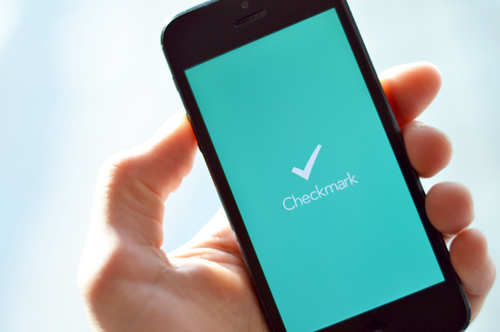
Checkmark arrived on the scene in 2012 with a lot of fanfare, and rightly so. It took location awareness and coupled it with task management in a way that set it apart from the rest of the pack. If the app Due is considered to be "Reminders on steroids" then I'd say that Checkmark was a self-aware version of Due. It could remind you within a certain time of arrival (or departure) to take care of certain tasks and was ideal for errand running at the very least and could even handle task management on a smaller scale at the most.
Checkmark 2 has taken a lot of what was already part of its predecessor, repackaged it in a wrapper suitable for iOS 7 and amped up the task management component to make it an even more complete solution for getting things done in the right place and at the right time.
I generally don't need to use an app like Checkmark during my heavy-lifting work days as I'm usually sequestered at home, but when I'm dealing with full-time "Daddy Duty" Checkmark 2 really comes in handy. I tend to take care of my errands every Tuesday and Wednesday, and by setting up Checkmark 2 so that as I leave one location it reminds me where to go next (something Dave Caolo also does and mentions in his review over at TUAW), I can keep momentum going as I knock off errands throughout the day. Like David also mentions, rather than use my calendar to indicate when I need to pick my daughter up from school I'd love to have the option of setting a time after I depart the school in the morning so Checkmark 2 tells me when to leave to pick her up. That would keep my calendar as free and clear as possible and also be useful during school holidays and sick days. I could just keep that reminder active and it would only alert me when I have actually made a trip to the school earlier in the day. Right now you can only set a reminder 1 hour after departing or arriving at a location).
You can move around locations in the Where space, which is something you could do in the original Checkmark. This is a handy feature as you use the app more and more so that you can sort locations you frequent more than others. Adding locations is a breeze and when you view All Tasks in this area you get a bird's eye view of what you need to do where and exactly how far away you currently are from those locations.
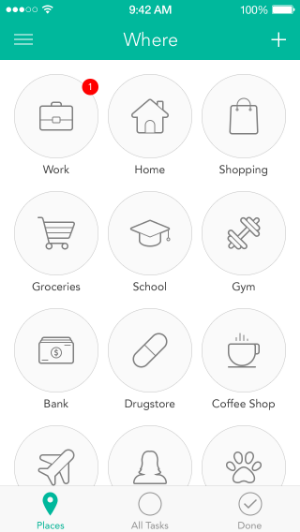
The "When" component allows you to set up one-off or repeating tasks/errands, and is worth using for time and date specific items. While I use the "Where" a lot more often than the "When," I can definitely see how someone who isn't currently using Reminders or a task manager of any sort could make use of Checkmark 2 as a reminders and task management app. The addition of Lists essentially can house projects if you decide to go this route, or for more simplistic things like shopping or gift lists.
Gestures come into play with Checkmark 2 as well, with swiping leading to either the deletion or rescheduling of When items and deletion or editing of Where items. Lists can be deleted through swiping (incidentally, all of the swiping is to the left) as well.
The real strength in Checkmark 2 continues to be its location awareness. I used Checkmark for that purpose (even though OmniFocus eventually gained the capability to handle that for me), and Checkmark 2 has upped the ante on its feature set in a big way. The one drawback is that I couldn't simply transfer my data from Checkmark to Checkmark 2 because of the newly included iCloud sync. I just took this as an opportunity to clean up my locations a bit — something I needed to do anyway. (The About section is loaded with helpful tips that will allow you to really make the most of the app.)
During its launch period Checkmark 2 is 50% off — just $2.99. If you've been looking for a clean and clever app that won't just help you get things done but will help you get them done in the right place and at the right time, then give Checkmark 2 a look.






 Related StoriesStep Away From The AppReview: The Productivity BlueprintA Look at the Samsung Galaxy Note 3 and Galaxy GEAR
Related StoriesStep Away From The AppReview: The Productivity BlueprintA Look at the Samsung Galaxy Note 3 and Galaxy GEAR
March 18, 2014
5 Key Anti-Procrastination Strategies For Millennials
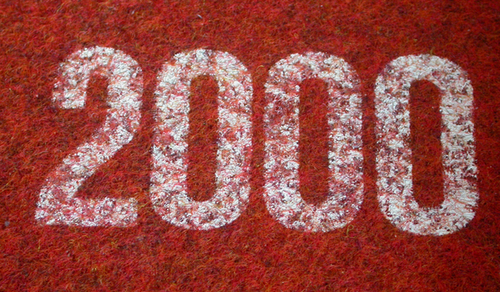
The following is a guest post by Leigh Fletcher. Leigh is a millennial sales executive, blogger and entrepreneur, with a passion for sales improvement strategies. Leigh writes practical articles with a focus on leveraging personal experience to help others learn new skills in selling or simply refine existing skills. You can learn more at Leigh-Fletcher.com.
As a millennial getting ready to take over the world, there is only one thing more important than your time: what you actually achieve from it.
To help you make those achievements happen more often, here are 5 key anti-procrastination strategies for millennials:
1. Procrastinate On Low Value Things
That's right. The first thing you should do is actually procrastinate – but only on the low value things that you would usually do just to keep "busy."
For example, last year I stopped doing my expenses almost all year. Why, you ask? Because I would rather spend my time selling, than spending my time recouping what has already happened, and I could catch up on later. (For the record, I made ten times more selling than what I later expensed.)
Start identifying and procrastinating on the things that are taking up time and not adding value to you. Then save them for doing once you've got the stuff that really does add value finished.
2. Get Buzzed
Everyone talks about setting goals, but if you have fiery goals and ambitions for what you want to achieve then you will start to revel in the idea of doing the hard things...and doing them fast. This is because the more you get buzzed about the critical hard things you do, the closer you are going to come to your success.
I often sit back on a Sunday (when I do my weekly plan) and feel like I don't even want to go into work in the morning. Then, I remember what I want to be making and what I want to achieve, and then I can't wait to get back into it.
3. Discipline Your Mind
About six months ago I hit a lull where I just couldn't seem to get myself to do the things I needed to do. Put simply, my mind had just gotten lazy. To get things done you need to make sure your desires can overpower that little voice in your head telling you not to bother. Most minds have been trained from an early age to procrastinate and get things done "just in time." I mean, think about the assignments you received (and procrastinated on) in your school and college life.
I started actually disciplining my mind through exercises like:
Setting specific times where I would check social media, to keep it from messing up my focus;
Doing e-mail 'triages' instead of working from my inbox (i.e. a fly-through to quickly sort out what I would answer straight away, delete, or schedule for later) and not spend my whole day in my email inbox distracted from my real objectives;
Spending a whole week where I didn't finish the last five percent of my meals. My mind had created the notion that I needed to finish every meal, but I trained it to let it go;
Starting picking random things around the house I wouldn't normally do but took me 10 seconds, and started doing them. I was disciplining my mind to "start up" and do things without needing massive planning;
Bribing myself. I promised myself something I wanted for after I got something done.
While it sounds silly, these drills helped shape my mind. Now when I'm ready to do some work, I click into gear much faster and simply get things done.
4. Schedule It
There is way too much going on for me to remember everything. Without a single-source and clear schedule, I would miss some major events (let alone prepare for them).
Now I make sure I sit down on a Sunday and plan out my week, putting time aside for major activities. I also spend time thinking creatively about how to supercharge my career. I'll often pick a particular meeting that week and set aside time several days in advance to prepare. Doing this spawns more ideas that I can bring up during the meeting, and I can blow everyone away by looking like I am ten steps ahead of them.
5. Remember Your Failures
When things are going well and you are succeeding, why would you bother getting things done early? I mean, everything is working and will continue to...right?
Nope. You're human. You'll fall down. And when you do, keep this in mind:
The key to changing your habits is to remember the failures.
I used to arrive to appointments right on time, until that one time I had a meeting with a senior executive. I left with enough time to spare, but ran into traffic delays. Suffice to say, I'll never forget the embarrassment and disappointment I faced that day.
Think about the consequences of you not getting your important things done (and done on time) or you'll risk experiencing actual consequences that will teach the lesson to you instead.
Do you have any anti-procrastination strategies you've put in place? Share them in the comments below.
Photo credit: nilob via SXC.HU






 Related StoriesPlease Take The 2014 Productivityist Reader SurveyThe NOW Year and The New Year9 Ways to Become a More Productive Writer
Related StoriesPlease Take The 2014 Productivityist Reader SurveyThe NOW Year and The New Year9 Ways to Become a More Productive Writer
March 17, 2014
The Productive Power Of Green
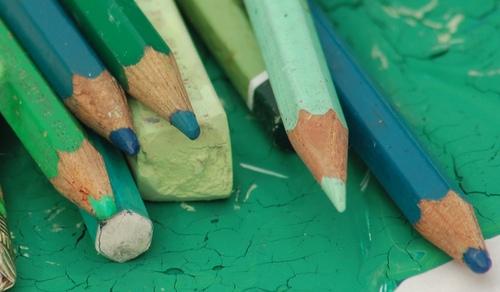
I use green in my OmniFocus themes. The primary colour used at Productivityist is green. I colour code with green on paper and in other apps I use where I can. It's used in the logo of the podcast I do with Michael Schechter, Mikes on Mics.
There are also several apps out there that are green, including ones I use regularly like Basil (which I've written about before). But the one I use most often is Evernote.
I'm a big fan of green, and there's plenty of reasons why the colour green has a certain productive power about it.
Green means go. To be fair, the traffic light needs amber and red just as much as it needs green. But it's the green that keeps things moving forward and ultimately helps people get to their destinations.
Green is the colour of will. I've written about my fondness for Green Lantern before, and tapping into the colour green doesn't just help the Green Lantern Corps in their battles – it helps me with my battles.
Green symbolizes luck - especially on St. Patrick's Day. We all need a little luck to move things forward in the right direction.
Green also is the colour of envy. But envy isn't necessarily bad when directed properly. In fact, envy can drive you to be better.
Green equals growth. If the grass is green and the trees are filled with leaves, you know it's a time of growth. Even the smell of fresh-cut grass and the smell of pine in the air signifies progress in some sense.
So go ahead, embrace green like I have. It may wind up being more than a colour when you do embrace it. In fact, the productive power of green may ultimately become a symbol of success.
Photo credit: mlkdesign via SXC.HU






 Related Stories27 Days In3 Things You Can Do To Start A Year Of ActionThe Next Move
Related Stories27 Days In3 Things You Can Do To Start A Year Of ActionThe Next Move
March 15, 2014
Step Away From The App
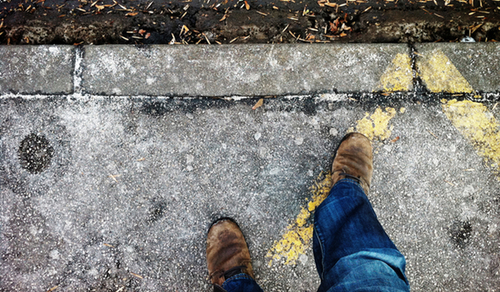
When people ask me "What app should I use to help me be more productive?" I have a simple answer.
"I don't know."
Everyone's work style is different. Everyone's proficiency with apps is different. Everyone's needs are different. In order to even begin to recommend an app, I'd need to know more about the person asking the question.
Sometimes a simple to-do list app like Clear or CARROT will do the trick. Sometimes a habit tracking app alone is enough because they tend to trust their paper-based workflow for their tasks. The only time I'll really suggest a radical change is when the person is using email to manage their tasks (and even then I need to look at a solution that will work best for them as they shift on that front) or when they use a calendar to manage their tasks (and again, I need to treat them with kid gloves as well).
If you find that you're stuck and not moving things forward as much as you'd like (or perhaps not moving the right things forward), then you need to step away from the app you're using and get some perspective. That doesn't mean abandon the app altogether; it means you need to evaluate it from a vantage point that doesn't have you immersed in it.
I'd suggest you step away for no more than a week. Use paper in the interim or something simple like the notes apps that you'll find included with most computers and mobile devices. Make note of what gets done and what doesn't. Then make a point of really figuring out your needs and looking at what solutions will help you propel things forward better.
Ask yourself these questions:
What platform or device do I use most often to achieve objectives? A computer? A mobile device? Paper?
Do I need something that needs to be connected to the internet all the time or only occasionally?1
Do I need something that will grow with me as I become more proficient and deal with more complex projects?
No app alone can help you with your efficiency and effectiveness. Sometimes you need to step away from the app you're using to see if you can go without it and still make things happen...or find something more suitable and make things happen even better than before.
Photo credit: vjeran2001 via SXC.HU
1 Figuring this out may eliminate things like Asana and Todoist, but may also result in a more costly solution such as OmniFocus or Things.






 Related StoriesWhat to Look for in Your First Task Management AppGetting Into Drafts and Launch Center ProFocus On The App Within
Related StoriesWhat to Look for in Your First Task Management AppGetting Into Drafts and Launch Center ProFocus On The App Within
March 7, 2014
The 3 Things Seinfeld Does That I've Built Into My Own Workflow

I've made no secret of the fact that I used to work in comedy. Sure, it was a fledgling career at best, having performed improv and sketch comedy sporadically at venues in a variety of places over a period of only a few years, but comedy is still in my blood...and it always will be. It's that love of the craft that led me to Jerry Seinfeld in the first place, and more recently to his online series Comedians in Cars Getting Coffee.1
While I was never a huge fan of his television series, I'm a big fan of his online one because it involves Seinfeld having candid and casual conversations with fellow comics that often lead to places that they rarely (if ever) go in traditional interviews. I love the light and breezy (yet entertaining and informative) tone of the show, and it's something I check out every time a new episode drops.
But I don't just follow Seinfeld's productions on the web. I also put three of his better known routines (not comedy routines, mind you) to use in my own work and life. Here are three things Seinfeld does that I've built into my own workflow to help me with my productivity.
1. Splash Water On The Face
This is definitely one of the simplest things I've added to my morning routine, but since I've been doing it first thing for so long now it has actually helped more of my morning routine stick. On Episode 68 of Here's The Thing with Alec Baldwin, Seinfeld mentions how he splashes water on his face as part of his regular morning routine. I may have removed the other elements of his routine (the sports radio listening, the regular bowl of oatmeal), but I've taken the splashing water on the face a step further.
You see, I don't just splash water on my face. I splash it on my face three times. I do this because it wakes my brain up a little bit more because it has to count along with the splashing, creating a bit more activity than just splashing alone. I also do it because I'm a night owl, as I've written about before, so I believe I need to have a heavier dose of cold water on my face in order to really wake me up.
2. Don't Break The Chain
This is probably the most commonly used "productivity trick" that Seinfeld employs. Brad Isaac shared details about the trick over at Lifehacker a few years back:
(Seinfeld) told me to get a big wall calendar that has a whole year on one page and hang it on a prominent wall. The next step was to get a big red magic marker.
He said for each day that I do my task of writing, I get to put a big red X over that day. "After a few days you'll have a chain. Just keep at it and the chain will grow longer every day. You'll like seeing that chain, especially when you get a few weeks under your belt. Your only job next is to not break the chain."
"Don't break the chain," he said again for emphasis.<
Apps like Full (which I've been using regularly), My Minutes, and Lift (which I've been using not-so-regularly) have this system in mind at their core. So every time I use Full and complete something associated with a habit (like exercising), I'm keeping the chain alive.
I also use this trick to track my daily word count, but instead of going digital on that front I'm using my NeuYear Calendar. I can't recall where I read about doing this, but I've found it to be exceedingly helpful — especially when writing a book.
3. Work It Out On Paper
In the 2002 film Comedian, you get to see the process of two very different comedians: Orny Adams and Jerry Seinfeld. One of the things that has stuck with me years after watching the film is while Adams was big into using digital solutions to map out his routines, Seinfeld dealt with good old-fashioned paper. Now he may very well move some of what he captured on paper and put it into something digital (like Evernote or something similar), but the fact that he started on paper is something that resonated with me because that's often where I start things.
Seinfeld demonstrated the need to capture ideas, and since it was in the early 200s there was no smartphone for him to use. He used paper because there was no other option readily available to him. Even now — when there are more options — he may very well still use it, either as a gateway to the digital realm or as a place of permanence. Regardless, there's definitely a power that paper has, and I use it to full advantage in my own workflow.
All of these things that Seinfeld does that I've adopted don't just revolve around productivity alone, they revolve around mindful productivity. Knowing that I need to splash water on my face to start my day (three times, no less) because it propels me forward into the next thing is crucial. Tracking my habits through a "don't break the chain" style of quantification is only part of the equation; why I'm doing it adds value to the whole process (and helps me stick with it). Understanding why getting things out of my head is far better than keeping it in my head has led me to keep a paper notebook and a pen with me wherever I go.
Sure, these three things that Seinfeld does (and I've adopted) help me get things done. But they also help make sure I stay on track to get the right things done...and that's what we all really want to do more than anything else.
During South By Southwest, I'll be sitting on a panel with Craig Jarrow (The Time Management Ninja) and Marc and Angel Chernoff (of marcandangel.com) entitled Mindful Productivity in a World of Interruption. You can learn more about the panel here — and we're hoping to be able to share it with those who couldn't make it to SXSW somewhere down the line.
Photo credit: ematil1023 via SXC.HU
1 I also love coffee a lot, which may have a little to do with it.






 Related StoriesThe One Email Trick That Keeps My Inbox In ShapeA Productive Life: Collect, Organize, Review And EliminateHow To Use Evernote To Store And Organize Your Ideas
Related StoriesThe One Email Trick That Keeps My Inbox In ShapeA Productive Life: Collect, Organize, Review And EliminateHow To Use Evernote To Store And Organize Your Ideas



